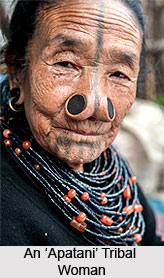 People of Arunachal Pradesh, who are well-known for their friendly nature and their hospitality, are mostly tribes which are of a Tibeto-Burmese origin. Immigrants form about 16% of the regional population of Arunachal Pradesh, while 30, 000 Bangladesh expatriates and Chakma tribes are also present in this part of the country. Assam and Nagaland are the Indian states from where the expatriates have arrived. As many as 20 important tribes and sub tribes reside in this north-eastern Indian state. Due to the vast diversity in the local tribes and sub tribes dwelling in this area, one will notice a variety of individual tastes, customs, traditions and attitudes indigenous to them.
People of Arunachal Pradesh, who are well-known for their friendly nature and their hospitality, are mostly tribes which are of a Tibeto-Burmese origin. Immigrants form about 16% of the regional population of Arunachal Pradesh, while 30, 000 Bangladesh expatriates and Chakma tribes are also present in this part of the country. Assam and Nagaland are the Indian states from where the expatriates have arrived. As many as 20 important tribes and sub tribes reside in this north-eastern Indian state. Due to the vast diversity in the local tribes and sub tribes dwelling in this area, one will notice a variety of individual tastes, customs, traditions and attitudes indigenous to them.
The cultural communities of Arunachal Pradesh can be categorised into three main groups, on the basis of their social and religious structures. The Sherdukpens and Monpas represent the very first group and are devout followers of Mahayana Buddhism, which is a tradition of the `lamas`. They inhabit in the West Kameng District. Beautifully adorned `gompas`, or Buddhist temples are existent here, which bear testimony to the fact that such tribes are quite religious. Terrace cultivation is practised by the local tribes, while some of them are fond of breeding mountain sheep and yak. `Khambas` and `Membas` are settlers of higher altitudes, close to the northern borders of Arunachal Pradesh. Along the eastern portion of this state, `Singhpos` and `Khamptis` are based and they are Buddhists who belong to the Hinayana sect. Historians believe that they had migrated from Burma and Thailand several years ago and presently utilize the ancient scripts which belong to their original motherland.
The second group of communities staying here comprise the `Nishings`, `Thongsas`, `Apatanis`, `Mijis`, `Mishmis`, `Akas`, `Adis` and `Bangnis`. They are said to be worshippers of the Moon God or `Abo-Tani` and the Sun God or `Donyi Polo`, who are believed to have been the ancestors for a majority of the regional tribes of Arunachal Pradesh. The religious customs and rituals they perform generally are an extension of their agricultural cycles. Animal sacrifices are made by them and nature deities are also invoked. Shifting or `Jhumming` cultivation is done by the local tribes and sub tribes present here. Wet rice cultivation is also practised on a large scale, particularly by the Apatanis and Adis, which indicate a fairly good agricultural economy. Pisciculture is yet another type of specialised industry in which the regional tribes indulge. Simultaneously, they practise cultivating a specific type of crop of the paddy, along with two different crops of fishes which they have been doing since many centuries.
Wanchos and Noctes are the third group of people residing in this area, which adjoins the state of Nagaland, located in Tirap District. Their society is quite disciplined, wherein the village chiefs enjoys a significant authority. The Noctes follow the basic type of Vaishnavism.



















